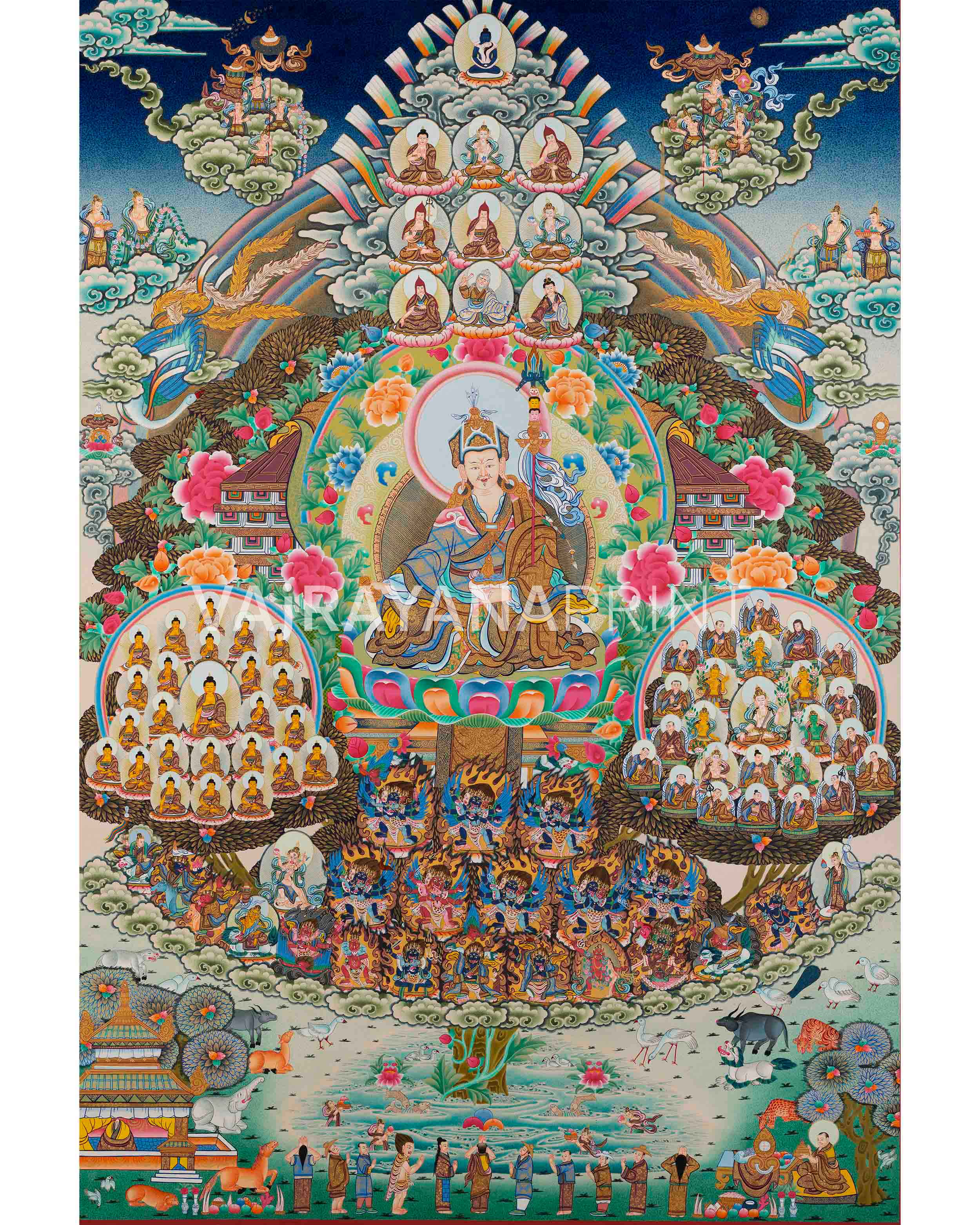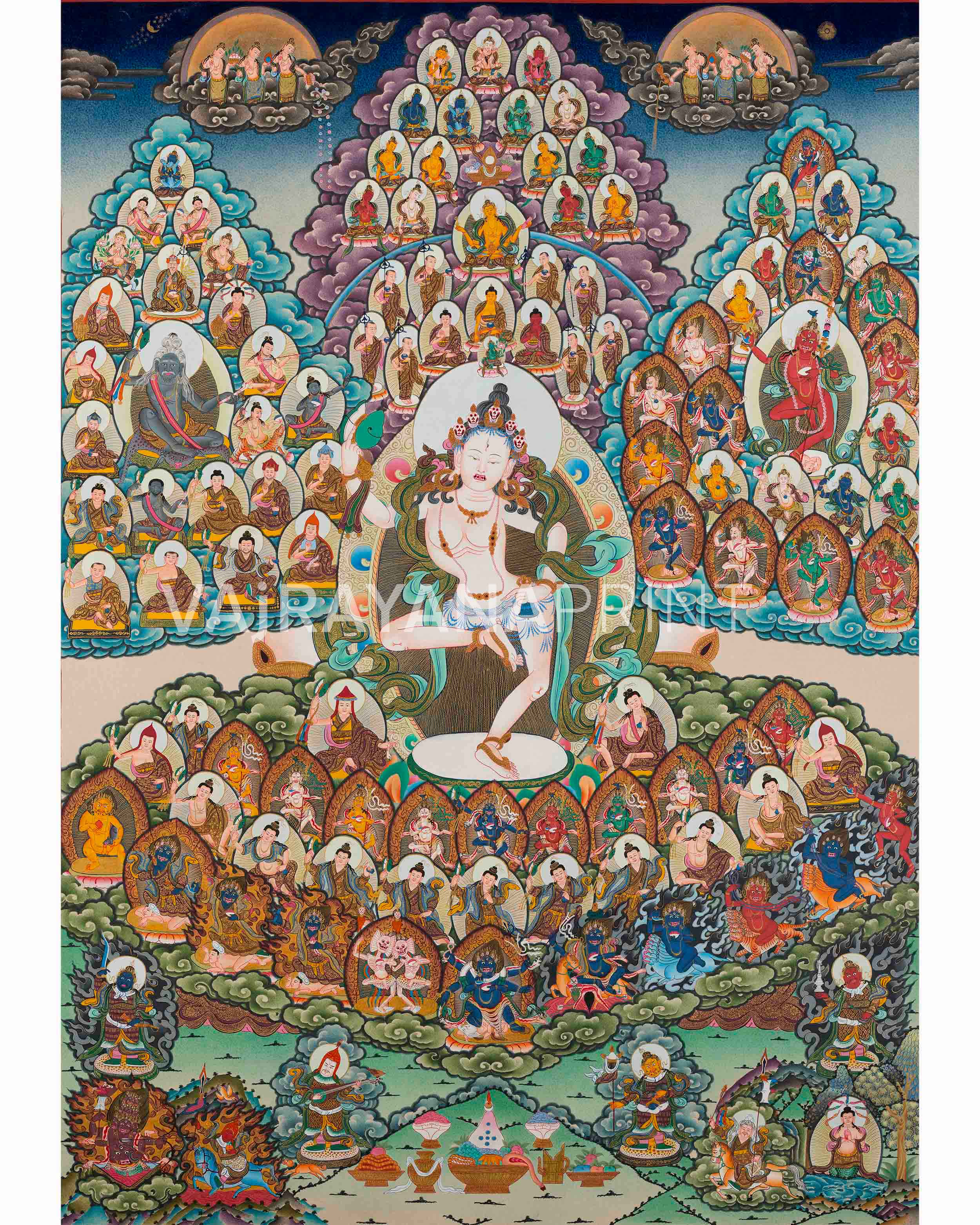Refuge Tree Prints
2 products
Showing 1 - 2 of 2 products
The Refuge Tree thangka (Field of Merit) contains a big tree with many branches and the Buddhas, Bodhisattvas, Dakinis, and other deities. The Refuge Tree is basically a mnemonic device used to visualize the genealogical chart of different lineages, teachings, and the order of transmissions to solidify the mind-mapping process
The Refuge Tree in Buddhism: Symbol of Spiritual Protection and Guidance
A crucial and significant idea in Buddhism, especially Tibetan Buddhism, is the "Refuge Tree." It serves as a conceptual and visual representation of the spiritual lineage of mentors, guardians, and deities that practitioners seek for direction, safety, and spiritual assistance.
Key Components of the Refuge Tree in Buddhism:
- The Three Jewels (Three Refuges): The Buddha, the Dharma, and the Sangha are the Three Jewels, or Three Refuges, at the center of the Refuge Tree. These are the fundamental items of refuge for Buddhists. The Dharma stands for the teachings and the way to enlightenment, the Buddha for the enlightened teacher, and the Sangha for the group of practitioners.
- Lineage Masters: The lineage masters surrounding the Three Jewels are usually Buddhist gurus from the past and present who have been instrumental in maintaining and passing on the teachings and practices.
- Protectors and Guardians: In Tibetan Buddhism, practitioners and the spiritual path are under the watchful eye of guardians and protective deities. These people provide support and protection from hindrances on the way to enlightenment.
- Ancestral characters: A few traditions feature historical characters or ancestors thought to have been significant to the lineage and the evolution of the tradition.
Significance of the Refuge Tree:
The Refuge Tree serves several vital purposes in Buddhism:
- Taking Refuge: It theoretically and graphically symbolizes "taking refuge." Seeking direction, protection, and support on their spiritual journey, Buddhists seek solace in the Refuge Tree, the Three Jewels, and the complete assembly of enlightened beings and instructors.
- Spiritual Connection: It cultivates a feeling of spiritual kinship with the heritage and culture. Spiritual practitioners experience a sense of belonging to a temporal and spatial spiritual family.
- Visual Meditation: The Refuge Tree can also be used as a center for meditation and visualization, assisting practitioners in connecting with the inner potential for enlightenment and the characteristics and attributes of the figures portrayed.
- Passing Down Heritage: The Refuge Tree facilitates the teachings and heritage from one generation to the next.
The refuge Tree's precise details can differ throughout Buddhist traditions. Still, its fundamental function in seeking shelter and establishing a connection with the spiritual lineage is a constant and unifying feature of Buddhist practice.


